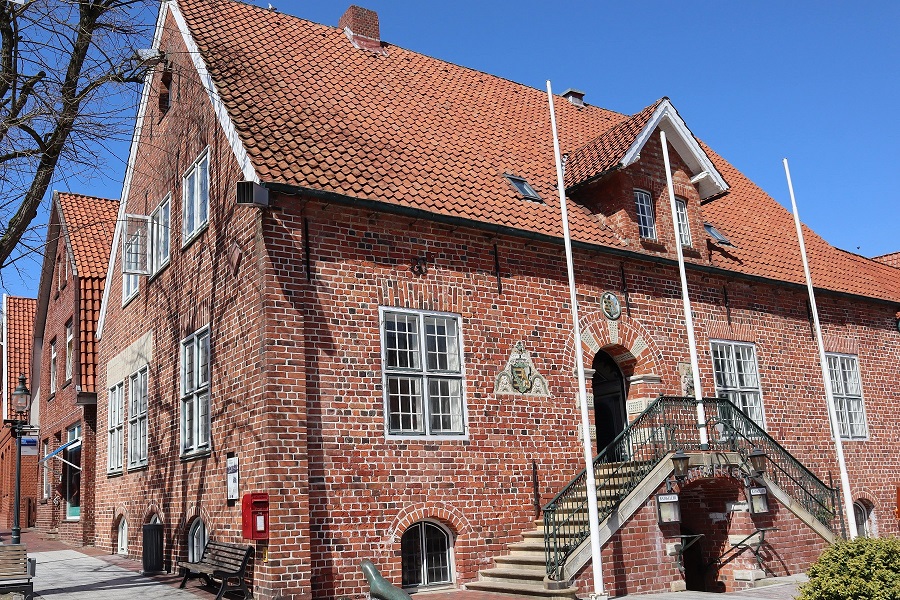Welcome to the audio tour through our historic town Otterndorf. 9th grade students from the local school Gymnasium Otterndorf have translated and recorded the English version of the tour for you.
The county Hadeln had a very good status for a long time. Compared to other peasants in the Middle Ages, the people in Hadeln enjoyed a lot of liberties because of their history. The main reason for that was that the inhabitants of the coastal strip had to drain a big part of their land and had to protect it from stormtides in order to make it fertile. The people who did most of the work were from the Netherlands and only worked there because they were granted certain privileges as a reward. The archbishop of Bremen, who had started the fertilisation of the coastal region, was able to change his position on these privileges after a few years. This happened to the peasants of Steding at the lower Weser, where he imposed these measures by force. The peasants of Hadeln were saved from the same destiny because Henry the Lion took over the reign and now they belonged to the duchy of Saxony. However, the dukes of Saxony branched off in different dynasties, which had different amounts of power and were not equally important. Furthermore, Hadeln has always been a little bit off the beaten track when it came to great political power and changes. Because of this, the peasants of Hadeln took care of most of their affairs themselves. And after the death of a sovereign, they waited until the new soveireign had granted all their rights and liberties again before they swore the oath of allegiance to him.
Otterndorf had a town concil, which consisted of two mayors and four senators. They met regularly in different taverns in Otterndorf. Sadly enough it did not always work out well, when they met. You couldn’t trust every tavern owner because they would listen to the things the town concil discussed and then gossip about it with other people. The situation got so out of hand that the mayors and senators had enough. They snitched on of one tavern owners to the duke, who now became aware of the unacceptable circumstances of these council meetings. He then ordered to build a basement and a house above it, which would function as a townhall. This way Otterndorf got its own townhall in 1583. Roughly 100 years later, rooms for the „Zwölfer“, which was a committee that supervised the senate of the town, was added.
On both sides and above the entry you can see two crests that each have their own history. They orginated from the western and eastern gate of the town wall, which was torn down in the 1800s because was not used any more and just interfered with traffic. The crest on the right belongs to the sovereign of Saxe-Lauenburg from 1580, the crests on the left side and above the door are the town’s coat of arms with the Saxon shield and crancelin on the left and an otter on the right as a symbol for „Ottern“-dorf.
